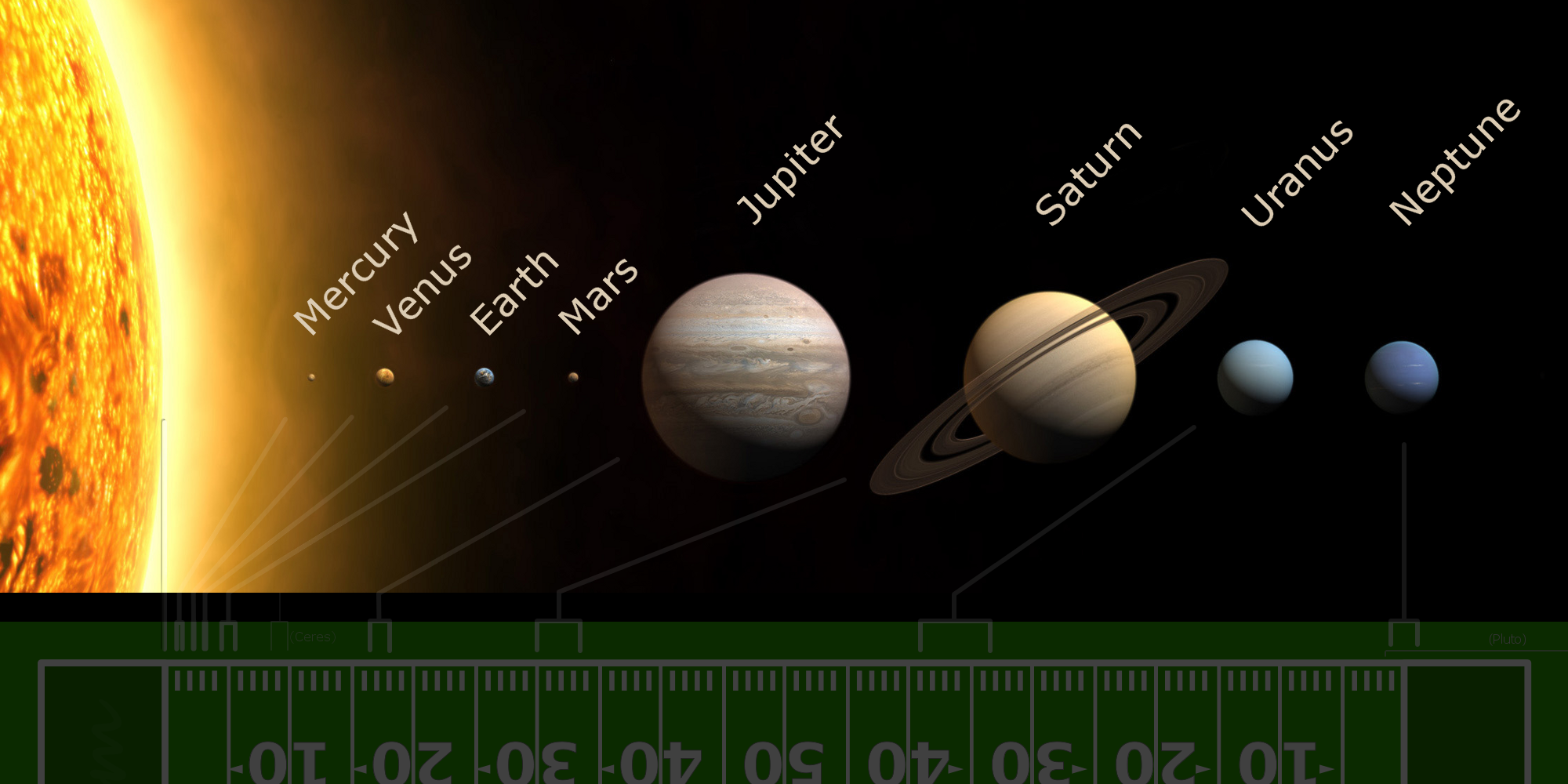
Which of the following planets take minimum time to take a one revolution around the sun?
A) Mercury
B) Jupiter
C) Saturn
D) Pluto
Answer
550.8k+ views
Hint: There is a relationship between the time period of revolution and major axis of elliptical path in the path in which the planet is moving. This theory is given by Kepler and it is the third law of Kepler's.
Complete solution:
Kepler say that when a planet revolves around the sun or another star, then its path will be elliptical. According to the kepler’s third law
${{T}^{2}}\propto {{a}^{3}}$ where $T$ is the time taken by planet in one revolution and $a$ is major axis of that elliptical path in which planet is revolving. That’s why if we go from near to far from sun then mercury is nearest one of the planets to the sun and then Jupiter, Saturn and then Pluto is one of the farest planets from the sun.
So, the major axis of elliptical path in which mercury is revolving is less than others. So, the time period of revolution or time taken by a planet for one revolution around the sun is least.
Hence, option (A) is correct.
Additional Information:
In this picture planets are shown in sequential and comparable size manner.

Time periods of planets in solar system to complete one revolutions are
Mercury- $88days$
Venus- $225days$
Earth- $365days$
Mars- $687days$
Jupiter- $12years$
Saturn- $28years$
Uranus- $84years$
Neptune- $165years$
Note: You have to memorise the correct sequence of planets from near to far from sun, or learn the time period of planets in which one revolution of planet is completed. The time period does not depend on the mass and size of the planet.
Complete solution:
Kepler say that when a planet revolves around the sun or another star, then its path will be elliptical. According to the kepler’s third law
${{T}^{2}}\propto {{a}^{3}}$ where $T$ is the time taken by planet in one revolution and $a$ is major axis of that elliptical path in which planet is revolving. That’s why if we go from near to far from sun then mercury is nearest one of the planets to the sun and then Jupiter, Saturn and then Pluto is one of the farest planets from the sun.
So, the major axis of elliptical path in which mercury is revolving is less than others. So, the time period of revolution or time taken by a planet for one revolution around the sun is least.
Hence, option (A) is correct.
Additional Information:
In this picture planets are shown in sequential and comparable size manner.

Time periods of planets in solar system to complete one revolutions are
Mercury- $88days$
Venus- $225days$
Earth- $365days$
Mars- $687days$
Jupiter- $12years$
Saturn- $28years$
Uranus- $84years$
Neptune- $165years$
Note: You have to memorise the correct sequence of planets from near to far from sun, or learn the time period of planets in which one revolution of planet is completed. The time period does not depend on the mass and size of the planet.
Recently Updated Pages
Master Class 12 Business Studies: Engaging Questions & Answers for Success

Master Class 12 Economics: Engaging Questions & Answers for Success

Master Class 12 English: Engaging Questions & Answers for Success

Master Class 12 Maths: Engaging Questions & Answers for Success

Master Class 12 Social Science: Engaging Questions & Answers for Success

Master Class 12 Chemistry: Engaging Questions & Answers for Success

Trending doubts
Who was the first woman to receive Bharat Ratna?

Write a letter to the principal requesting him to grant class 10 english CBSE

Why is there a time difference of about 5 hours between class 10 social science CBSE

What is the median of the first 10 natural numbers class 10 maths CBSE

The Equation xxx + 2 is Satisfied when x is Equal to Class 10 Maths

Discuss the main reasons for poverty in India




